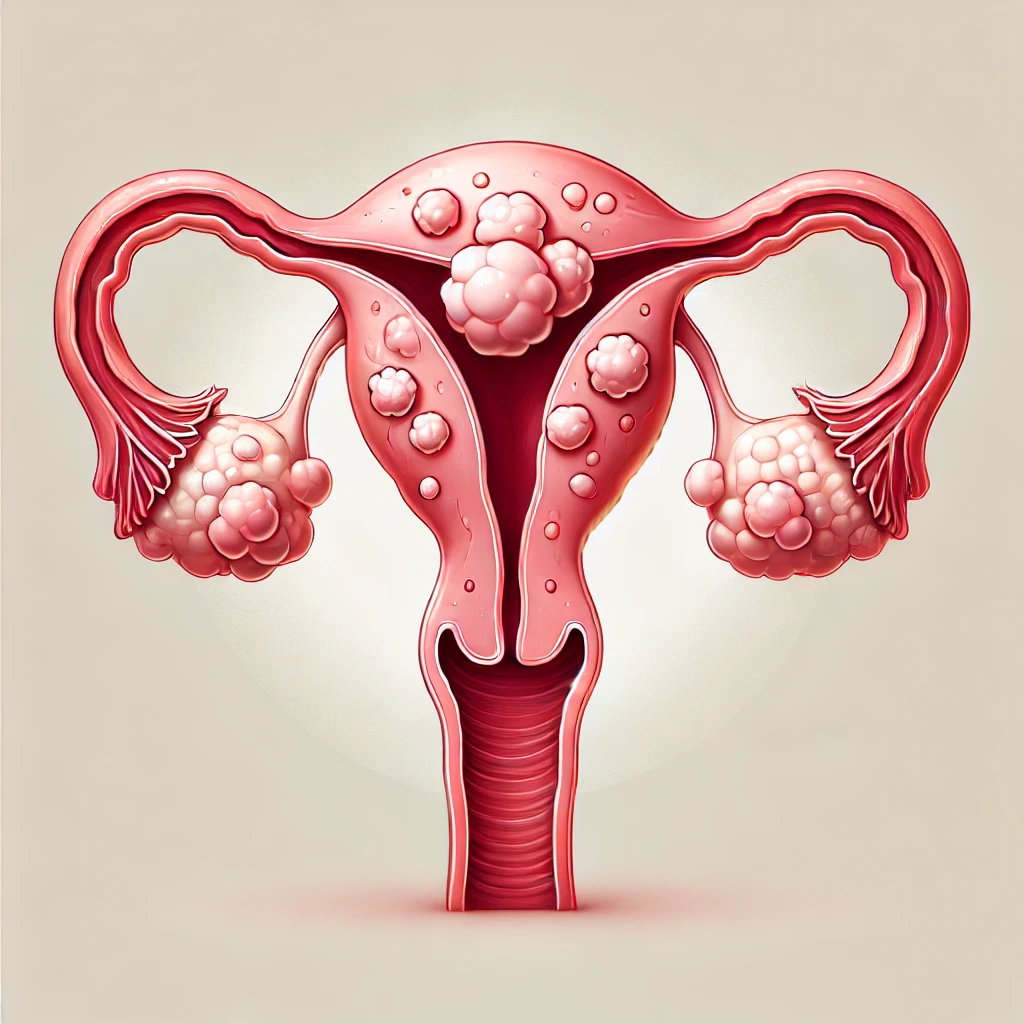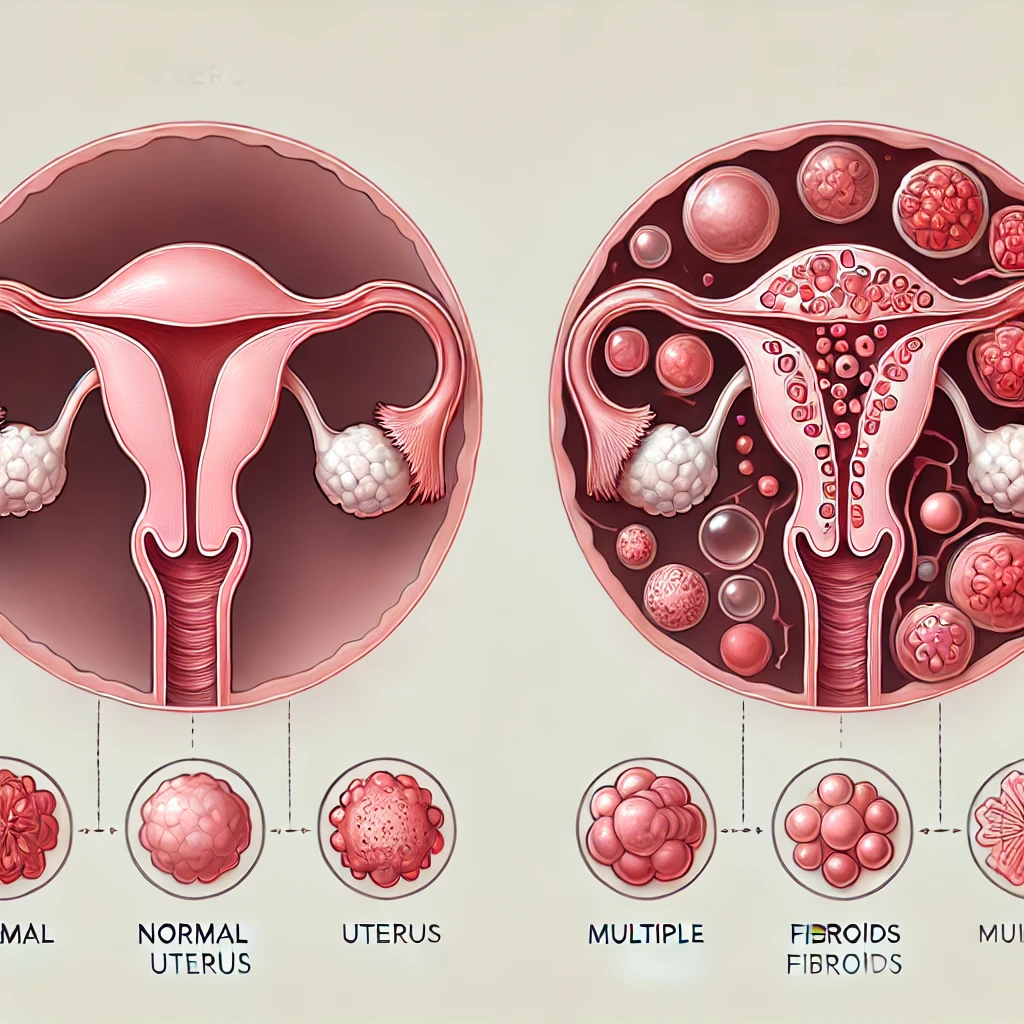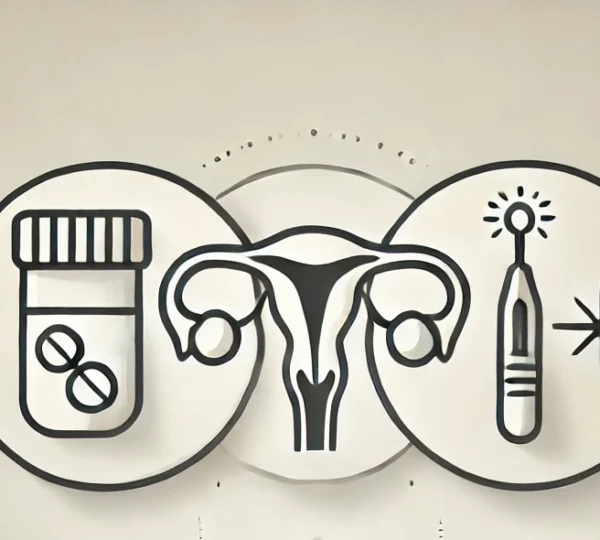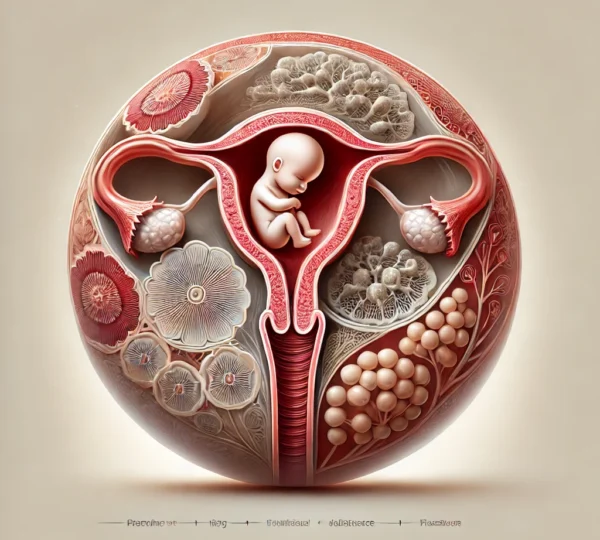
Understanding Fibroids: Causes, Symptoms, and Treatment Options
Imagine discovering a condition that affects nearly 70% of women by the age of 50, yet most women don’t even know they have it. Fibroids are that hidden reality, silently existing without symptoms, only to disrupt lives when they grow larger or start causing pain. This silent issue can affect everything from menstruation to fertility. But the good news? There are ways to treat and even prevent them. Let’s dive into what fibroids are and what you can do about them.
Fibroids: An Overview
Fibroids are typically benign (non-cancerous) tumors, and their occurrence is not uncommon. Women often discover it during routine pelvic exams or imaging tests for other concerns. Although they are not inherently dangerous, they can sometimes lead to symptoms that affect a woman’s quality of life, such as heavy menstrual bleeding, pelvic pain, or discomfort during intercourse. Understanding the nature and how they impact the body can help in making informed decisions about treatment.
Do Fibroids Need Treatment?

A diagram comparing a normal uterus to one with multiple fibroids of different sizes
Whether they require treatment largely depends on several factors, including their size, location, and the symptoms they cause. Many women may not need any treatment if they are small and asymptomatic. In fact, it often shrink after menopause due to the decrease in hormone levels. However, for women who experience severe symptoms like heavy bleeding, pain, or fertility issues, medical intervention may be necessary.
Treatment options vary widely, from medication to surgical procedures, and the decision to treat it is usually based on the severity of symptoms. In cases where it significantly impact a woman’s life, it’s essential to seek medical advice and consider the most appropriate course of action.
Where Do Fibroids Come From?
The exact cause is still unclear, though several factors are believed to contribute to their development. Hormones like estrogen and progesterone, which regulate the menstrual cycle, are thought to promote the growth. This is why they often grow during a woman’s reproductive years and shrink after menopause when hormone levels drop.
Genetics also play a role, as women who have family members with this condition are more likely to develop them themselves. Other factors such as obesity, high blood pressure, and a diet high in red meat have been linked to an increased risk of fibroids.
How Do You Fix Fibroids?

various treatment options for fibroids include medications, surgical procedures, and non-surgical treatments
Fixing or treatment depends on the severity of the symptoms and the size. For mild cases, lifestyle changes and medications may be enough to manage symptoms. Medications like hormonal therapies can help shrink or alleviate symptoms like heavy menstrual bleeding.
In more severe cases, surgical options may be considered. These include:
- Myomectomy: This surgery removes the growth while leaving the uterus intact, making it an option for women who wish to preserve fertility.
- Hysterectomy: This is the complete removal of the uterus and is considered a permanent solution for women who no longer wish to have children.
- Uterine Artery Embolization (UAE): This minimally invasive procedure blocks the blood supply to the fibroids, causing them to shrink.
Each treatment has its pros and cons, and a healthcare provider can help determine the best option based on individual needs and health goals.
What’s the Worst That Can Happen with Fibroids?
Though usually not life-threatening, they can cause significant complications if left untreated. Large growths may lead to severe pain, urinary problems, and even complications during pregnancy. In rare cases, they can cause the uterus to become enlarged, which may result in a condition called anemia due to excessive blood loss during menstruation.
While they are almost always benign, very rare cases of cancerous fibroids, known as leiomyosarcomas, can develop. Regular monitoring and timely treatment can prevent most serious complications.
Can I Get Pregnant with Fibroids?

cutaway view of the uterus, showing how fibroids can affect pregnancy
Yes, it is possible to get pregnant with fibroids, but their presence can sometimes complicate conception and pregnancy. Depending on their size and location, they can interfere with the implantation of the embryo or increase the risk of miscarriage and preterm labor. Women with fibroids may also experience more discomfort during pregnancy, as they can grow due to increased hormone levels.
For women struggling with infertility or recurrent miscarriages, removing fibroids may improve their chances of a successful pregnancy. It’s essential for women with this condition who are planning to conceive to discuss their options with a healthcare provider.
How to Remove Fibroids Without Surgery
For women who prefer to avoid surgery, there are non-surgical methods to shrink or manage fibroids. These include:
- Medications: Hormonal treatments like GnRH agonists can temporarily shrink them by decreasing estrogen levels. However, these are usually short-term solutions.
- MRI-Guided Focused Ultrasound Surgery (FUS): This non-invasive procedure uses high-frequency sound waves to destroy the tissue.
- Diet and Lifestyle Changes: Maintaining a healthy weight, reducing red meat consumption, and eating more fruits, vegetables, and dairy may help lower the risk of fibroid growth.
While non-surgical methods can be effective for some women, they may not provide a permanent solution, and regular monitoring is necessary to ensure they don’t grow or cause complications.
Fibroids: What You Need to Know
Fibroids might seem intimidating, especially when they go unnoticed for so long, but they don’t have to be life-altering. By understanding their causes, symptoms, and treatments—both surgical and non-surgical—you can take charge of your health. Whether you’re concerned about fertility, ongoing symptoms, or simply want peace of mind, knowledge is the first step toward making the right decisions for your well-being. Don’t let it control your life; take action today!
Learn more from our blog section…
All Categories
Recent Posts
When Your Period Hits Hard: Menstrual Cramps Self-Care
True Stories of Period Poverty From Africa
Tags
Give them a helping hand
Every donation fuels our mission to combat period poverty. Your generosity brings us closer to menstrual equity.
+234-909-482-1642
inquiries@blossomflow.org




